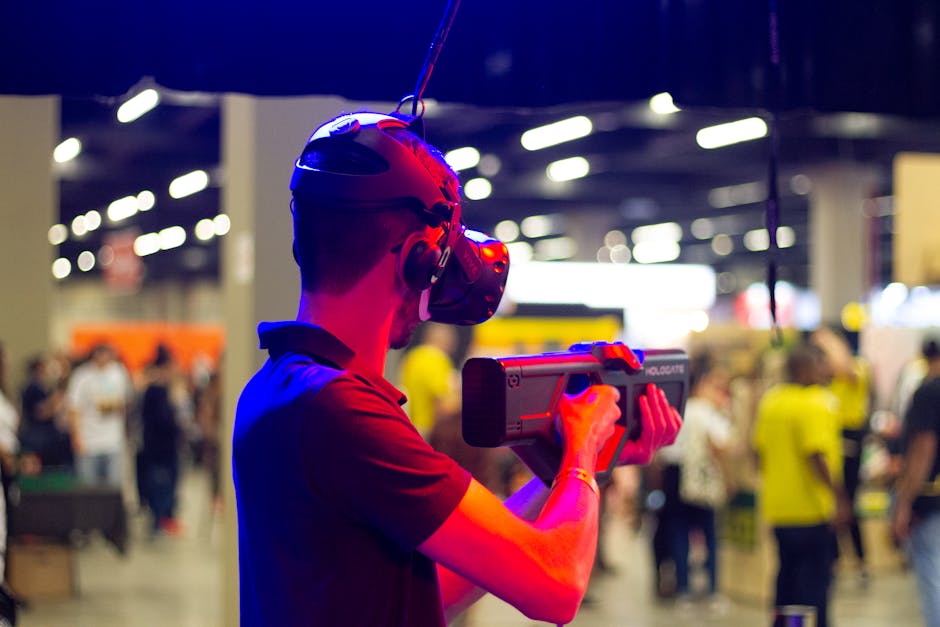Introduction
Our world is a symphony of stimuli, a constant barrage of sights, sounds, smells, tastes, and tactile sensations. But how do we make sense of it all? The answer lies in two fundamental cognitive processes: sensation and perception. These processes are the gateways to our understanding of the world, and they play a crucial role in our daily lives.
Sensation is the process of detecting stimuli from our environment or from our bodies. This could be anything from the heat of the sun on our skin, to the taste of a delicious meal, to the pain of a stubbed toe. Perception, on the other hand, is the process of interpreting these sensory signals, giving them meaning and context. It’s the difference between simply seeing a red light, and understanding that it means “stop”.
Understanding sensation and perception is not just an academic exercise. It has practical implications in many areas of life, from marketing and design to healthcare and personal well-being. By understanding how we sense and perceive the world, we can better design products, services, and environments that align with our sensory capabilities and perceptual tendencies.
The Process of Sensation
The process of sensation begins with sensory receptors, specialized cells or structures that respond to specific types of stimuli. These receptors are found throughout our bodies and are responsible for our five main senses: sight, hearing, taste, smell, and touch. Each type of receptor is tuned to detect specific types of stimuli, such as light waves for vision, sound waves for hearing, and chemical molecules for taste and smell.
Once a sensory receptor detects a stimulus, it generates a signal that is sent to the brain. This process, known as transduction, involves converting the physical properties of the stimulus into a neural signal that the brain can understand. For example, when you touch a hot stove, temperature receptors in your skin transduce the heat into a neural signal that travels to your brain, leading you to perceive the stove as hot and painful.
But what happens when a stimulus is constant? This is where sensory adaptation comes into play. Sensory adaptation is the process by which our sensory systems become less sensitive to constant stimuli. For example, when you first jump into a cold pool, the water feels extremely cold. But after a few minutes, your body adapts to the temperature and it doesn’t feel as cold anymore. This table summarizes the main sensory receptors and their functions:
| Sensory System | Receptor Type | Stimulus Detected |
|---|---|---|
| Vision | Photoreceptors | Light waves |
| Hearing | Hair cells | Sound waves |
| Taste | Taste buds | Chemical molecules |
| Smell | Olfactory receptors | Chemical molecules |
| Touch | Touch receptors | Pressure, temperature, pain |

Photo by Antoni Shkraba on Pexels
The Role of Perception
While sensation is about detecting stimuli, perception is about making sense of these stimuli. It’s the process that allows us to understand what we’re sensing. For example, you might sense a particular combination of colors and shapes, but it’s your perception that tells you you’re looking at a tree. In other words, sensation is about the raw data, while perception is about the interpretation of that data.
Perception involves organizing and interpreting sensory information in a way that makes sense to us. This process is known as perceptual organization, and it involves a number of principles that our brains use to make sense of sensory information. These principles include things like grouping similar objects together, filling in gaps to create complete objects, and recognizing familiar patterns.
One of the most famous theories of perceptual organization comes from the Gestalt psychologists, who proposed a number of principles that describe how our brains organize sensory information. These Gestalt principles include the laws of proximity, similarity, continuity, closure, and figure-ground. For example, the law of proximity states that objects that are close together are perceived as a group. The law of similarity states that similar objects are perceived as a group. And the law of closure states that we tend to see complete figures even when part of the information is missing.
Influences on Sensation and Perception
Our sensation and perception are influenced by a variety of factors, including biological, environmental, and psychological factors. Biological factors include things like our genetic makeup and our sensory thresholds, which are the minimum levels of stimulation that we can detect. For example, some people have a higher threshold for pain than others, which means they can tolerate more intense stimuli before they perceive it as painful.
Environmental factors include our cultural background and our experiences. For example, people from different cultures may perceive the same stimulus in different ways. A color that is considered lucky in one culture may be considered unlucky in another. Similarly, our past experiences can shape our perceptions. If you’ve had a bad experience with dogs in the past, you might perceive a barking dog as more threatening than someone who has had positive experiences with dogs.
Finally, psychological factors like attention, expectations, and emotions can also influence our sensation and perception. For example, if you’re focused on a particular task, you might not notice a loud noise in the background. Similarly, if you expect a food to taste a certain way, your perception of its taste might be influenced by your expectations. And if you’re feeling anxious, you might perceive a neutral face as angry. This is why practices like mindfulness can be so beneficial, as they help us to become more aware of our sensory experiences and perceptions.

Photo by Mikhail Nilov on Pexels
Sensation and Perception in Everyday Life
Understanding sensation and perception can help us make sense of many aspects of our everyday lives. For example, it can help us understand why we sometimes experience sensory illusions, which are perceptions that do not match the actual physical reality. Examples of sensory illusions include optical illusions, where we perceive shapes, colors, or movements that aren’t really there, and auditory illusions, where we hear sounds that aren’t really there.
Sensation and perception also play a key role in sensory marketing, which is a type of marketing that targets the senses to influence consumer behavior. For example, a store might use pleasant scents to create a positive shopping environment, or a food company might use bright colors to make their products more appealing. Understanding how we sense and perceive these stimuli can help us make more informed decisions as consumers.
Finally, understanding sensation and perception can help us understand and empathize with people who have sensory disorders, which are conditions that affect the ability to sense or perceive stimuli. These include conditions like blindness and deafness, as well as less well-known conditions like synesthesia, where people experience a blending of the senses, such as seeing sounds or tasting colors. By understanding these conditions, we can better support those who live with them and work towards more inclusive societies.

Photo by Bruno Bueno on Pexels
Conclusion
In conclusion, sensation and perception are fundamental cognitive processes that allow us to interact with and make sense of the world around us. Sensation involves detecting stimuli through our sensory receptors and converting these stimuli into neural signals through the process of transduction. Perception involves interpreting these sensory signals and organizing them into meaningful patterns through processes like perceptual organization and the application of Gestalt principles.
The study of sensation and perception is a fascinating field that continues to evolve as we learn more about the complexities of the human brain and sensory systems. It has implications in a wide range of fields, from psychology and neuroscience to marketing and design, and it can help us better understand and navigate our sensory experiences in everyday life.
Finally, it’s important to remember that our sensations and perceptions are not static, but are influenced by a variety of factors, including our biology, our environment, and our psychological state. By being aware of these influences, we can become more mindful of our sensory experiences and perceptions, and better understand how they shape our interactions with the world. So the next time you stop to smell the roses, take a moment to appreciate not just the scent, but the complex processes of sensation and perception that make it possible. #Sensation #Perception #SensoryExperience #MindAndBody #CognitiveProcessing



